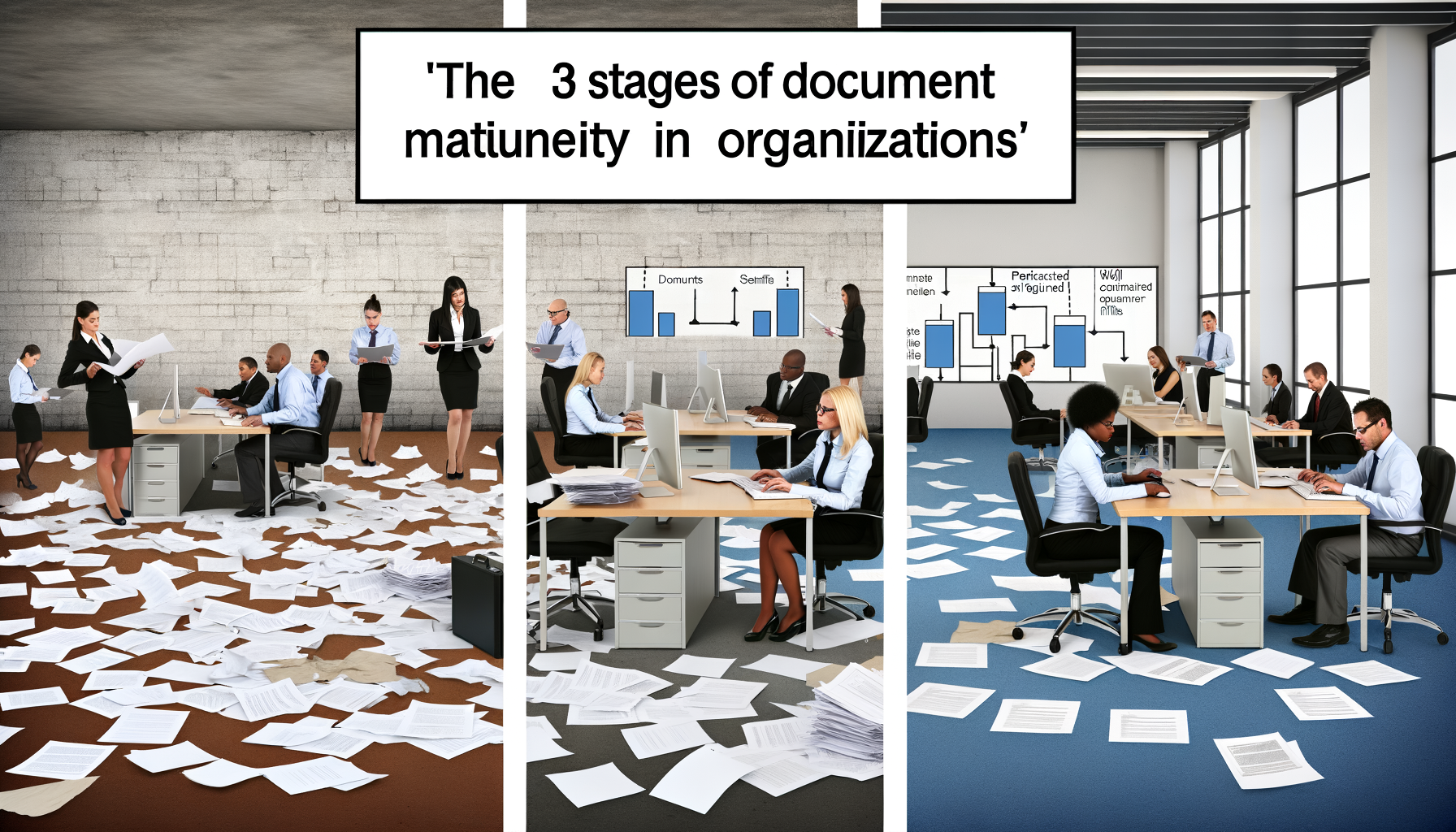
The 3 Stages of Document Maturity in Organizations
The Journey from Chaos to Control: Understanding the Stages of Document Maturity
Every ambitious organization eventually faces the inevitable challenge of handling the escalating complexity of documents and data. Whether it’s marketing strategies, financial reports, or customer interactions, the capability to efficiently manage documents can significantly impact an enterprise’s agility and success. I’d like to delve into the three stages of document maturity—a framework essential for understanding how businesses evolve from chaotic beginnings to a state of controlled, optimized processes.
Understanding the Concept of Document Maturity
Document maturity in organizations isn’t just about going paperless or adopting a specific software—it’s about restructuring workflows to leverage both automation and human expertise most effectively. A mature document management strategy reflects enterprise readiness and supports scaling by reducing errors, enhancing collaboration, and improving compliance.
Let’s walk through the stages of document maturity and explore the evolutionary path that each organization embarks upon:
1. The Initial Stage: Chaos and Disorder
In an organization’s infancy, document management often appears chaotic. This stage is characterized by:
- Lack of Centralization: Documents are stored across multiple locations—desktops, emails, cloud storage—making it challenging to maintain consistency and access the needed information swiftly.
- Manual Processes: Tasks such as approvals, edits, and sharing are handled manually, consuming significant time and increasing the risk of errors.
- Limited Access Control: Without well-defined access protocols, sensitive information may be exposed to unauthorized personnel, posing security risks.
This stage often results in wasted time searching for files, duplicated efforts, and increased frustration among the workforce. Understanding this as the starting point sets the agenda for necessary changes.
2. The Developing Stage: Structuring and Workflow Evolution
The second stage is all about implementing structure. Recognizing the limitations of a chaotic system, organizations begin to introduce elements of centralization and automation:
- Document Centralization: Moving towards a centralized document management system where files are organized with consistent naming conventions and version control ensures everyone can find what they need quickly.
- Automation of Repetitive Tasks: By introducing workflow automation for document approvals and updates, organizations increase efficiency and accuracy.
- Enhanced Access Management: Instituting role-based access controls to ensure that information is only accessible to applicable team members.
This stage involves significant changes in the organization’s culture and technology. With your teams beginning to leave behind manual grunt work, they’re free to focus on more strategic tasks, supporting workflow evolution.
3. The Mature Stage: Optimization and Strategic Utilization
In the final stage of document maturity, organizations reach a level where their document practices are tightly integrated with business strategies. Traits of this stage include:
- Optimized Processes: Fine-tuned workflows and automated systems are in place, reducing bottlenecks and promoting innovation.
- Advanced Data Analytics: With comprehensive data and document tracking, organizations can analyze patterns and trends, providing insights for decision-making.
- Continuous Improvement: Establishing mechanisms for regular review and refinement of document processes ensures that the system adapts to new challenges and opportunities as they arise.
This stage isn’t a final destination but a continuous journey. Successful organizations recognize that maintaining a mature document strategy requires ongoing adaptation and learning.
Empowering Your Organization’s Document Journey
Embracing the document maturity journey requires dedication and strategy. It’s about understanding where your organization currently stands and mapping out the steps needed to advance. As someone deeply invested in fostering organizational change, I know that progressive maturity in document handling not only helps to scale SaaS platforms but also prepares enterprises for future expansion across different segments.
To those on this path: embrace technology, empower your team with the right tools, and adopt a mindset focused on continuous improvement. I encourage you to reflect on your current stage of document maturity and take actionable steps towards achieving enterprise readiness and sustainable growth.
If you’re interested in learning more about how to transform document chaos into structured innovation, or have thoughts to share on this topic, feel free to reach out. Your journey towards efficiency and excellence could inspire countless others in the startup ecosystem.
